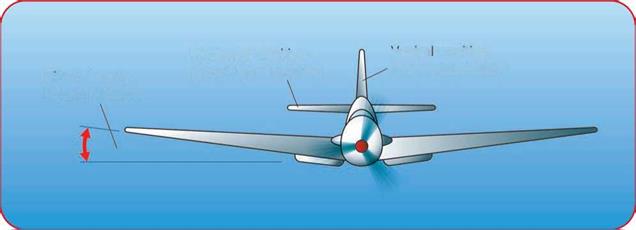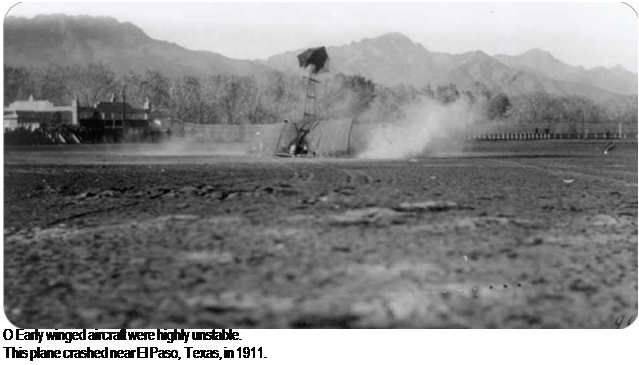Stability and Control
|
A |
n airplane’s stability is its ability to correct itself when it is upset by turbulence or a gust of wind. The stability of an aircraft affects its performance, handling, and control in the air. Most airplanes are designed to be stable in all three dimensions: longitudinal stability (stability in pitch), lateral stability (stability in roll), and finally directional stability (stability in yaw).
Longitudinal and Lateral Stability
Longitudinal stability helps an airplane to stay level from nose to tail. This form of stability is provided by the aircraft’s horizontal stabilizers, or tailplanes. If a gust of wind pushes a plane’s nose up, the horizontal stabilizers produce more lift and raise the tail as well, keeping it level with the nose. If a gust pushes the nose down, the tail also dips.
Lateral stability helps to stop a plane from rolling, or banking, unless the pilot
wants it to roll. The wings provide the lateral stability. Most airplane wings tilt up at an angle from the fuselage to the wingtips, making a shallow V shape. This is called the wing dihedral. If the plane rolls to one side, one wingtip rises, and the other falls. The plane also begins to slide sideways toward the lower wing. As it starts to slide, air pushes back against it. The air resistance lifts the lower wing and levels the aircraft.
An airplane’s wings usually are connected to the plane at the bottom of the fuselage, but a few planes have wings that connect at the top of the fuselage. These wings do not have a dihedral shape. Instead, they are level or droop down a little. The drooping wing shape is the opposite of dihedral, and it is called negative dihedral or anhedral.
![]()
 О This diagram shows the dihedral angle of the wing used in most airplanes. The angle provides lateral stability and keeps the aircraft from rolling during flight. The stabilizers in the tail provide longitudinal and directional stability.
О This diagram shows the dihedral angle of the wing used in most airplanes. The angle provides lateral stability and keeps the aircraft from rolling during flight. The stabilizers in the tail provide longitudinal and directional stability.
![]()
 |
This type of airplane gets its lateral stability from the weight of its fuselage. If the plane is pushed over into a roll by a gust of wind, the fuselage works like the heavy weight at the bottom of a pendulum and swings the plane back to an upright position. Hang gliders and microlight aircraft are stable for the same reason-the pilot’s weight hanging below the wing provides stability.










